"I came to Saudi Arabia before the country was opened to tourists"
Categories: Travel
By Pictolic https://pictolic.com/article/i-came-to-saudi-arabia-before-the-country-was-opened-to-tourists.htmlSaudi Arabia was one of the most closed countries for tourists, since non-Muslims were not issued tourist visas. Only pilgrims could enter the country during the Hajj (pilgrimage to sacred sites in Mecca). However, the situation may change: the head of the Saudi Commission for Tourism and Antiquities, Prince Sultan bin Salman bin Abdulaziz, said that in early 2018, Saudi Arabia will issue visas to tourists.
A couple of years ago, the government briefly opened the borders and began issuing visas, but it quickly ended. Photographer Eric Lafforgue managed to get a visa and went on a trip. A rare opportunity to get to a country that regularly appears in the headlines of the world media and in which not so many people from his entourage have visited, allowed the photographer to plunge into the culture and traditions of an extremely conservative state for two weeks.
That's what, according to Lafforgue's urgent advice, should be left at home when going to Saudi Arabia, if you don't want to get a fine or even go to jail:
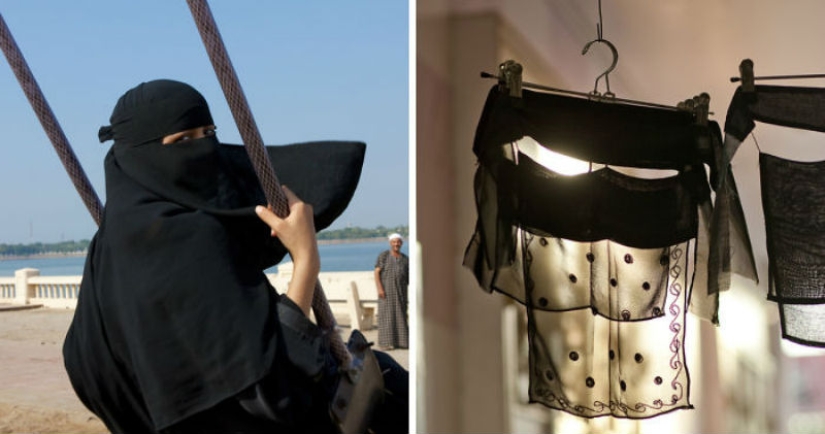
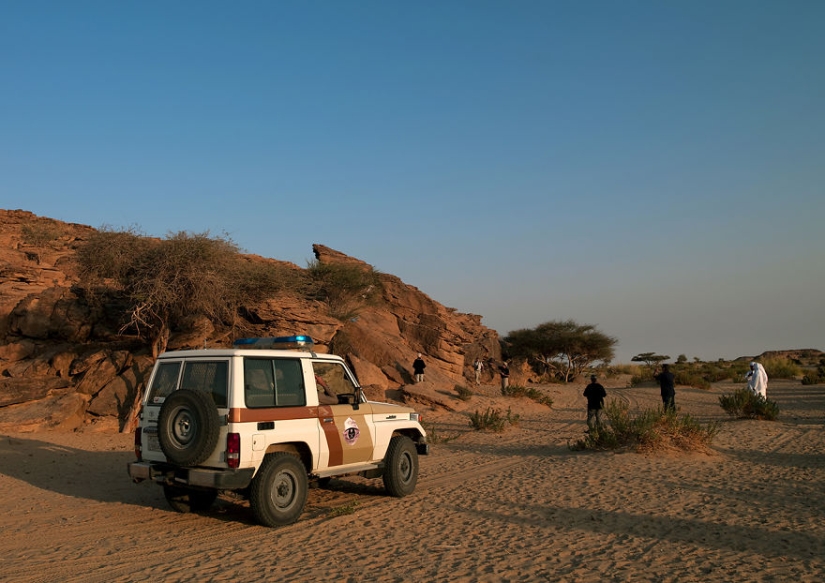 Throughout the journey, we were accompanied by a police escort to facilitate our movement. At least that's the official reason.
Throughout the journey, we were accompanied by a police escort to facilitate our movement. At least that's the official reason.
The Kingdom has long been a target for Al-Qaeda terrorist attacks on foreigners. Another reason not to let potential victims into the country.
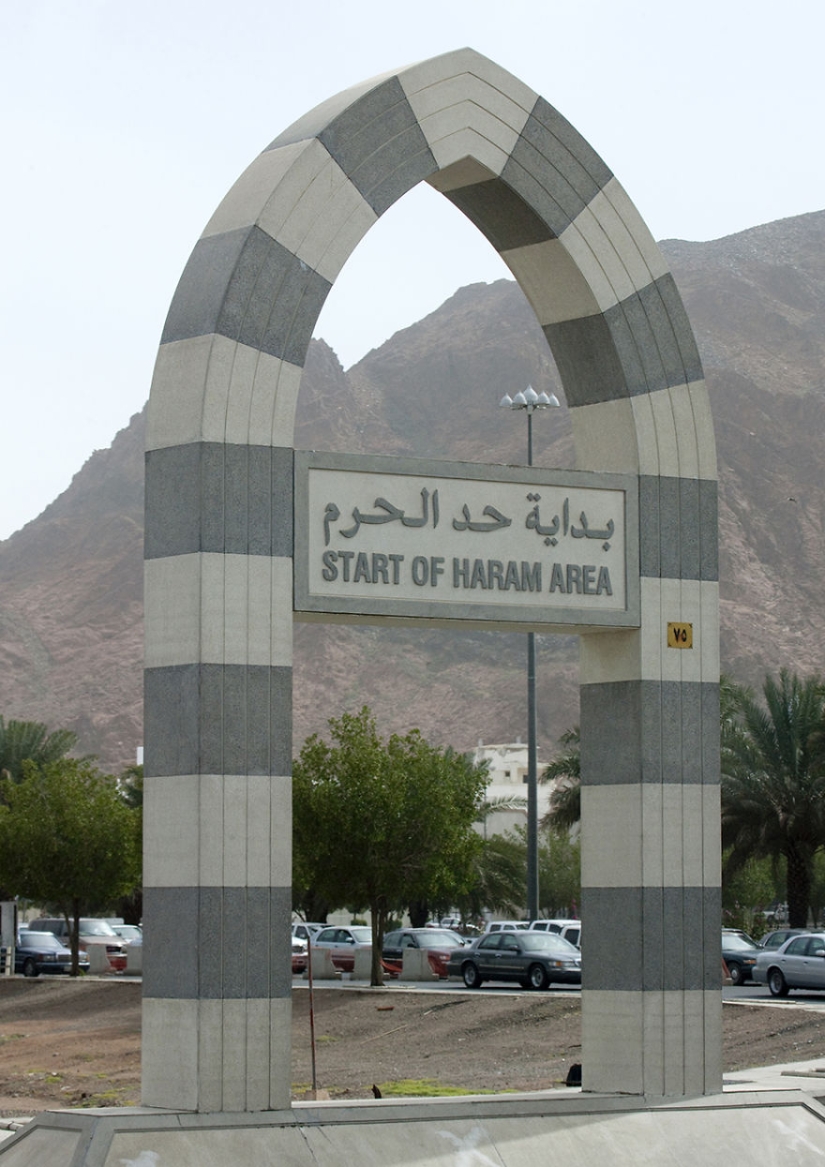 Arches are clearly visible on the roads around Jeddah. They mark the boundaries of areas where non-Muslims can travel. Behind them is a road leading to Mecca. Violation of the law can lead to imprisonment or even the death penalty.
Arches are clearly visible on the roads around Jeddah. They mark the boundaries of areas where non-Muslims can travel. Behind them is a road leading to Mecca. Violation of the law can lead to imprisonment or even the death penalty.
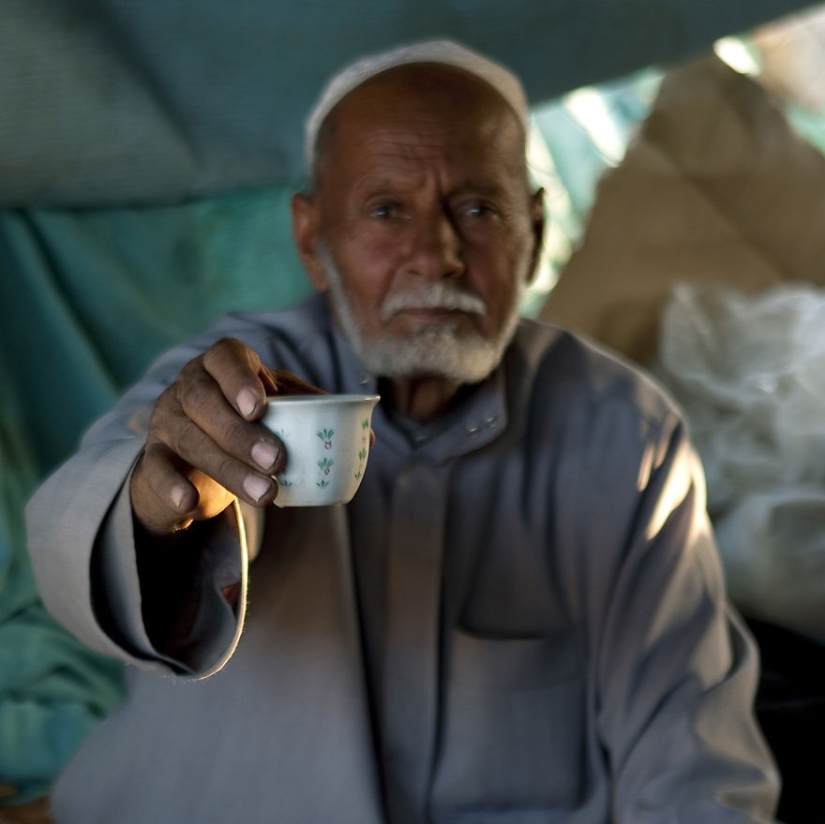 Locals say that if you see the open door of the house, you can freely enter the house, where you will immediately be treated to tea. Most likely, you will see a Hindu servant, a woman - never. Such hospitality is widespread in the villages.
Locals say that if you see the open door of the house, you can freely enter the house, where you will immediately be treated to tea. Most likely, you will see a Hindu servant, a woman - never. Such hospitality is widespread in the villages.
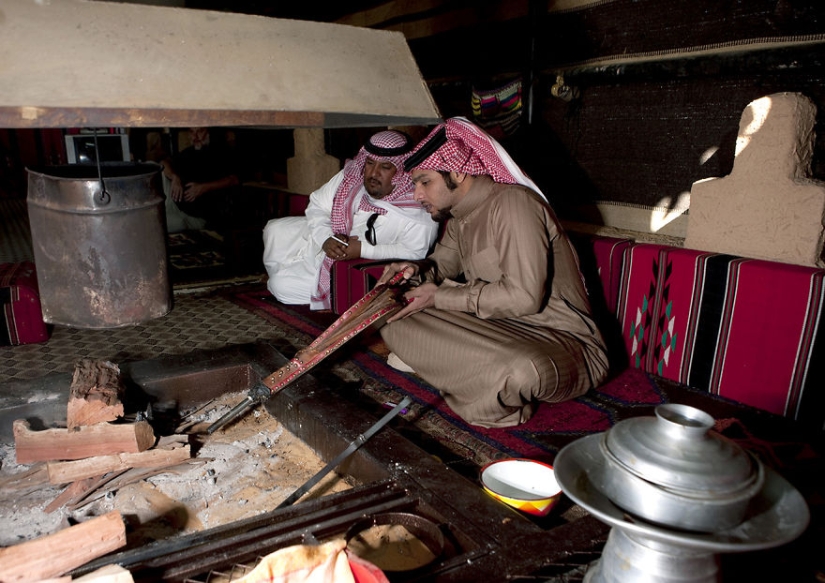 Families living in cities like to spend their weekends in tents. This is such a modern version of the life of the Bedouins - their ancestors, but only with satellite TV, air conditioning and a refrigerator.
Families living in cities like to spend their weekends in tents. This is such a modern version of the life of the Bedouins - their ancestors, but only with satellite TV, air conditioning and a refrigerator.
 Falconry in the desert.
Falconry in the desert.
First they release a pigeon, followed by a falcon. And the owner usually jumps behind the wheel of an SUV and tries to follow the whole process of hunting by car. In fact, the hunt itself does not last long, less than a minute, the falcon catches the pigeon and kills it. As a reward, he receives the head and heart of a bird. The owner does not let the falcon out of sight, and for a reason — it costs 20 thousand dollars.
 Many have farms in the desert where the Rashaids raise camels. Moreover, the most beautiful animals bring significant income thanks to breeding services.
Many have farms in the desert where the Rashaids raise camels. Moreover, the most beautiful animals bring significant income thanks to breeding services.
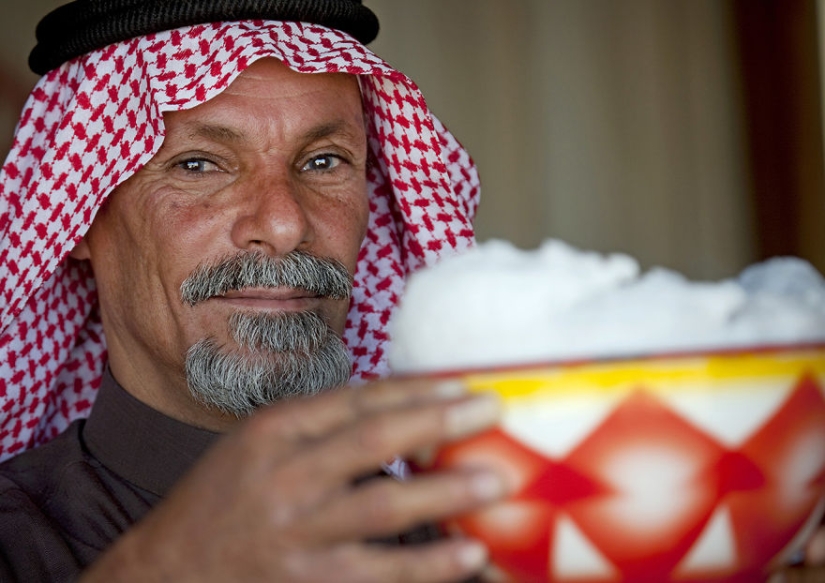 Every time you meet a Bedouin, you will have to drink camel milk. This protein-rich milk is also sold in supermarkets. It is believed that it has medicinal properties for the prevention of certain forms of cancer.
Every time you meet a Bedouin, you will have to drink camel milk. This protein-rich milk is also sold in supermarkets. It is believed that it has medicinal properties for the prevention of certain forms of cancer.
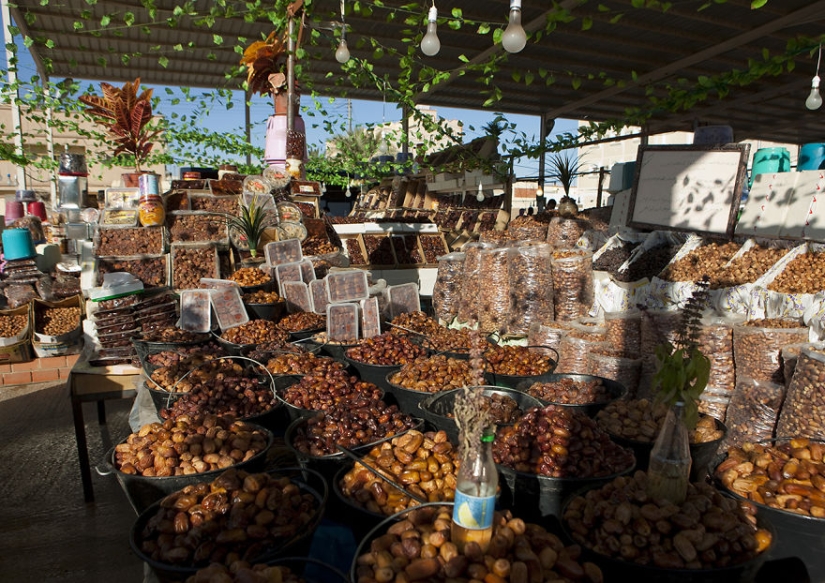 Saudi Arabia ranks third among the largest date producers in the world.
Saudi Arabia ranks third among the largest date producers in the world.
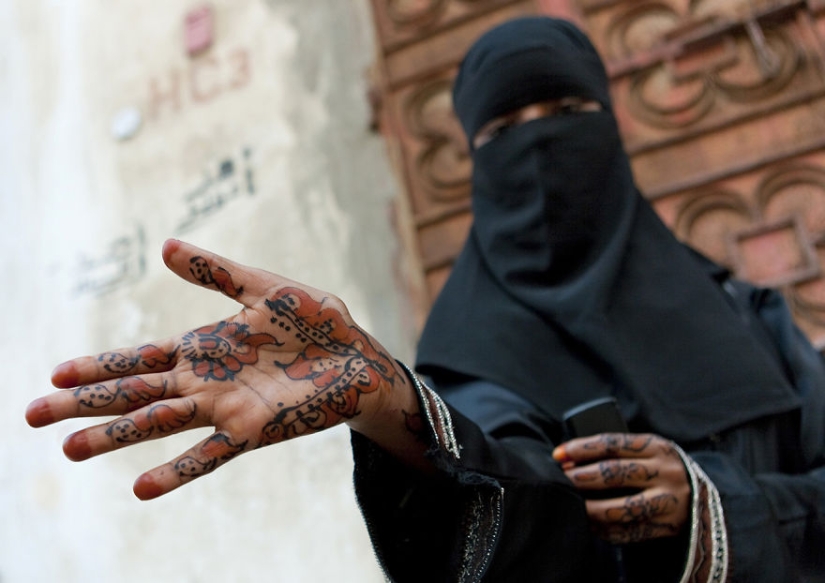 The only women you can talk to on the street are immigrants who profess Islam. The photo shows a Somali girl on the street of Old Jeddah.
The only women you can talk to on the street are immigrants who profess Islam. The photo shows a Somali girl on the street of Old Jeddah.
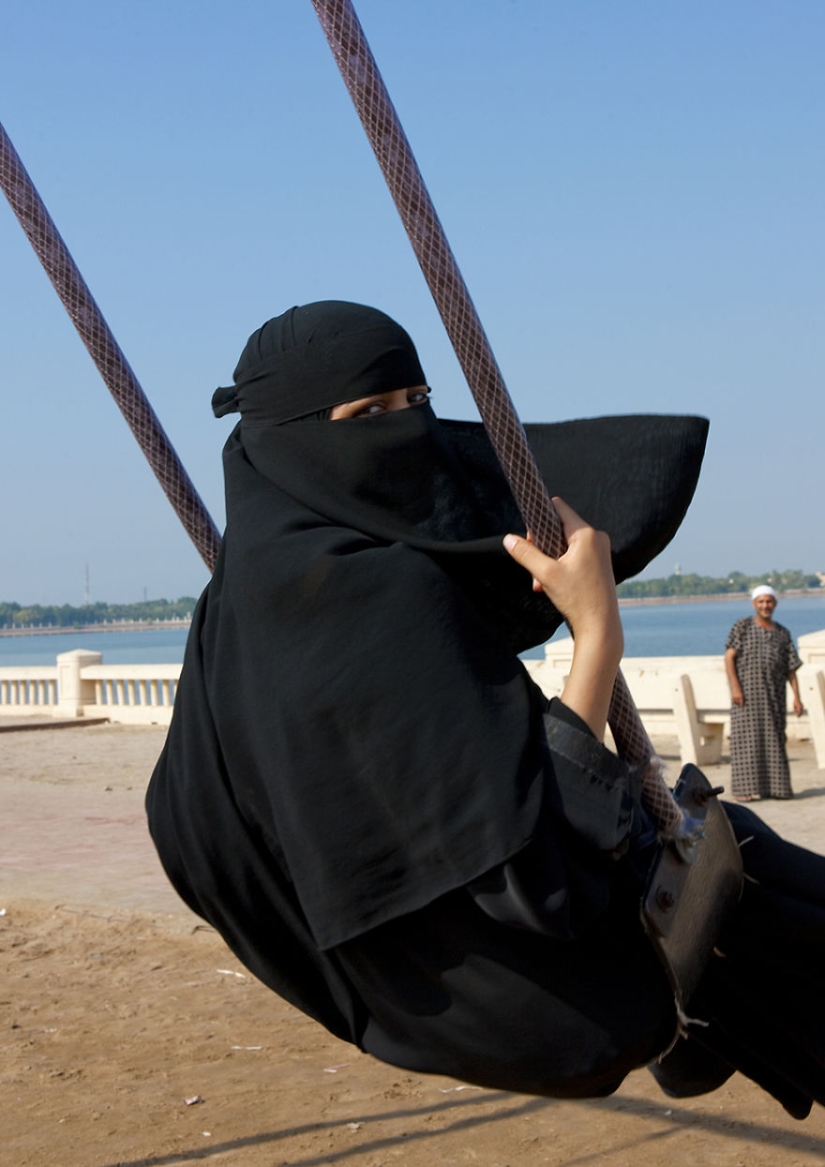 Under the yoke of ancient traditions, women are deprived of most of their rights.
Under the yoke of ancient traditions, women are deprived of most of their rights.
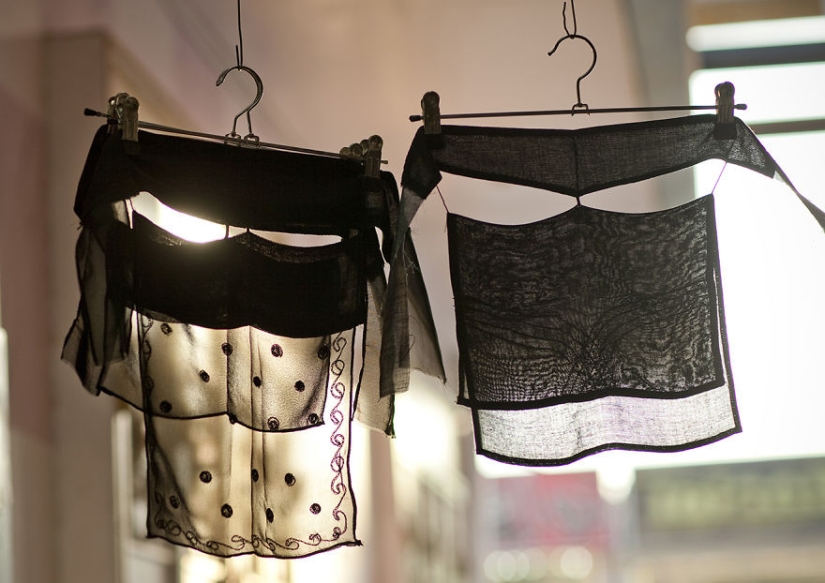 Without the permission of a guardian, be it a husband, father or brother, women can do almost nothing. For example, drinking coffee in a restaurant, going to the pool, going to university, traveling or cycling.
Without the permission of a guardian, be it a husband, father or brother, women can do almost nothing. For example, drinking coffee in a restaurant, going to the pool, going to university, traveling or cycling.
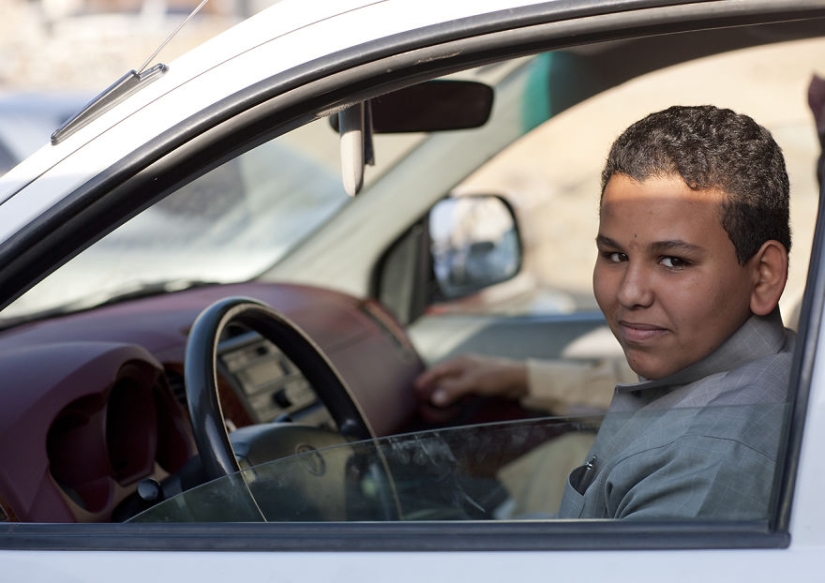 In the south of the country, you can often meet very young drivers. Moreover, until 2017, Saudi Arabia remained the only country in the world where women did not have the right to drive.
In the south of the country, you can often meet very young drivers. Moreover, until 2017, Saudi Arabia remained the only country in the world where women did not have the right to drive.
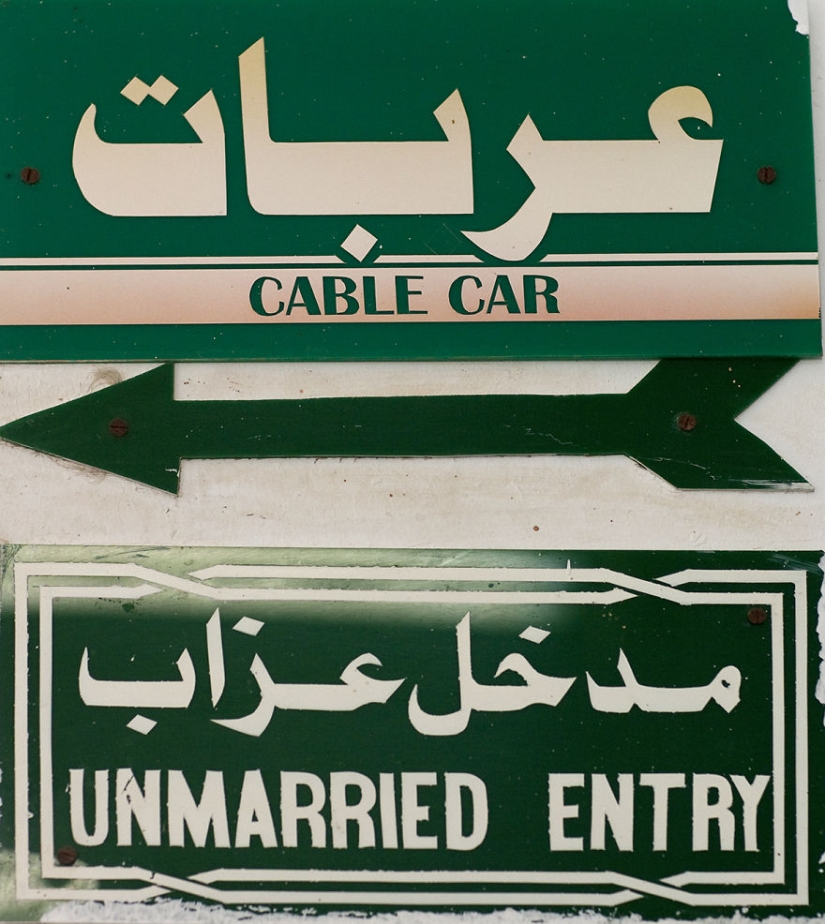 There are many rules in the country regarding the social status of a person. For example, families are the first to board a plane and offer them secluded seats in a restaurant.
There are many rules in the country regarding the social status of a person. For example, families are the first to board a plane and offer them secluded seats in a restaurant.
 Men rub their noses in greeting. Friends can also hold hands. Do not confuse this with homosexual relationships, which are punishable by death.
Men rub their noses in greeting. Friends can also hold hands. Do not confuse this with homosexual relationships, which are punishable by death.
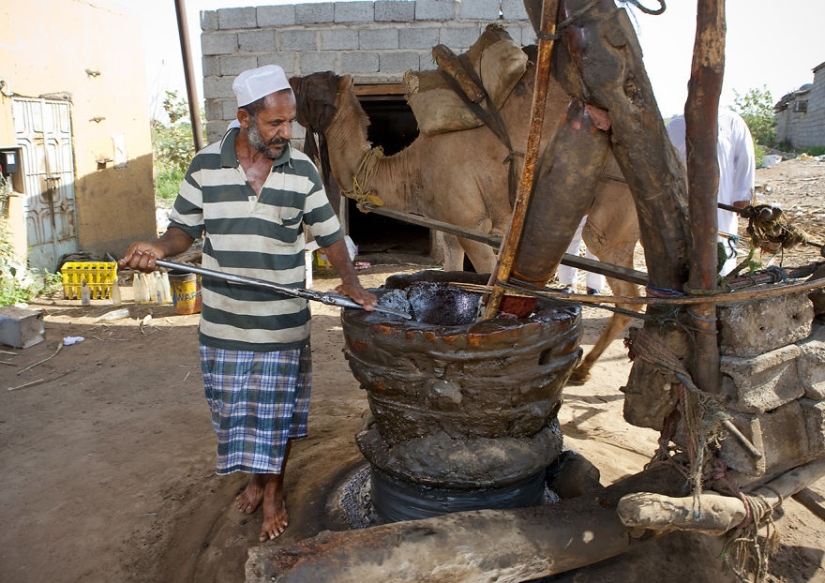 Many associate the Kingdom with wealth, luxurious houses and prosperity. But outside of cities, the country looks different. You can see scenes reminiscent of biblical times.
Many associate the Kingdom with wealth, luxurious houses and prosperity. But outside of cities, the country looks different. You can see scenes reminiscent of biblical times.
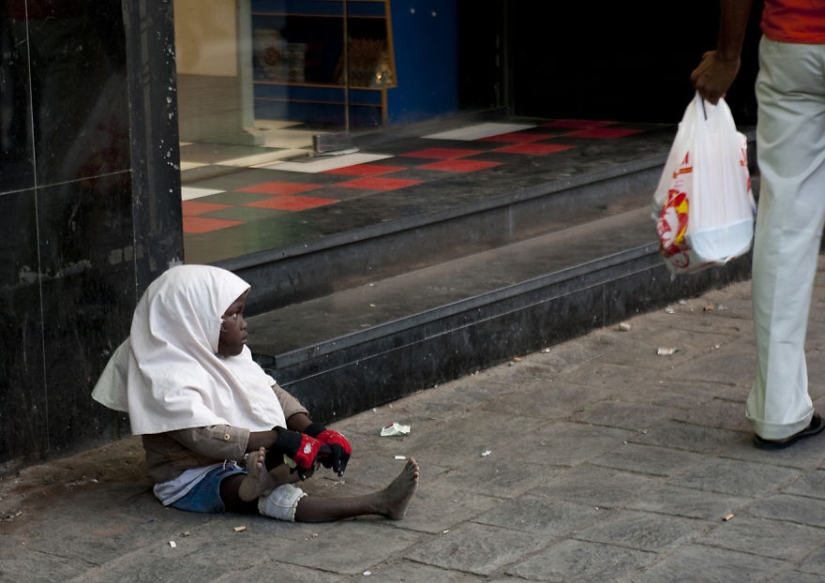 A Somali girl begs. In 2013, the authorities expelled hundreds of thousands of illegal workers from the country.
A Somali girl begs. In 2013, the authorities expelled hundreds of thousands of illegal workers from the country.
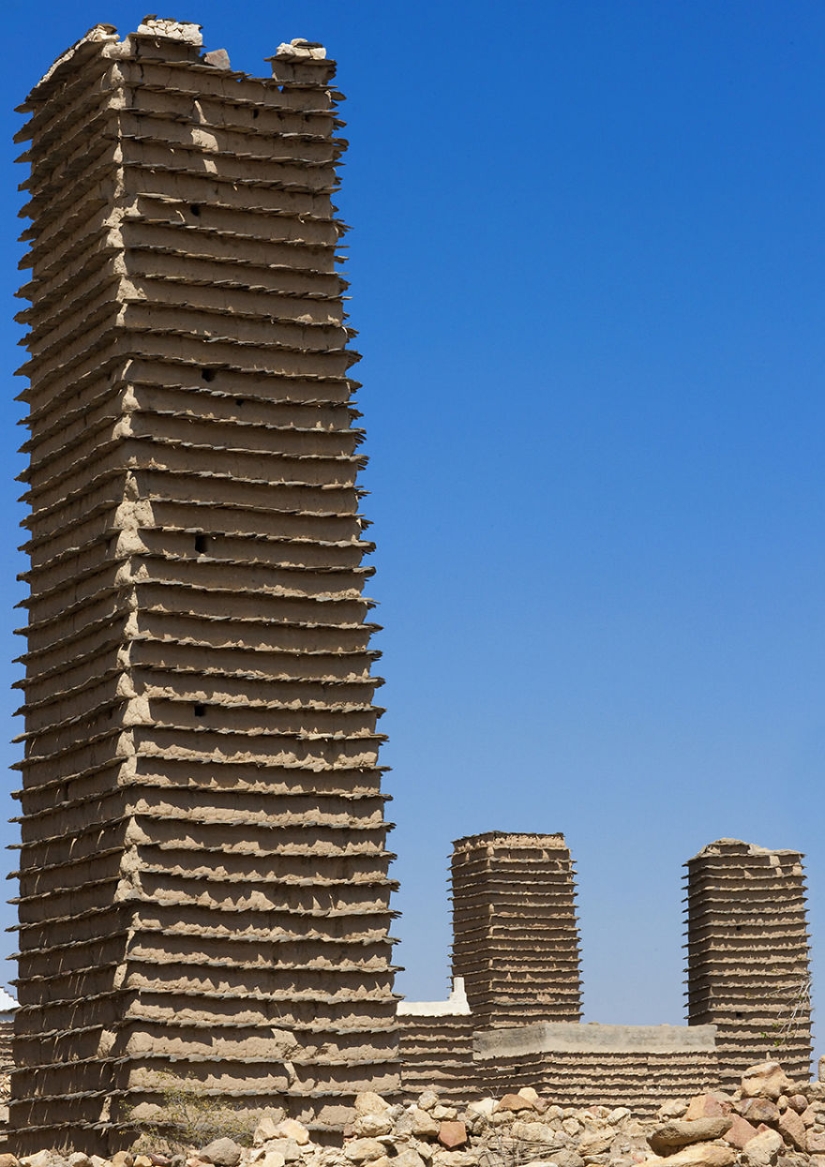 Some villages are surrounded by a protective wall, and foreigners, including Saudis from other regions, are not welcome, as local tribes protect their traditional way of life and reject the central government.
Some villages are surrounded by a protective wall, and foreigners, including Saudis from other regions, are not welcome, as local tribes protect their traditional way of life and reject the central government.
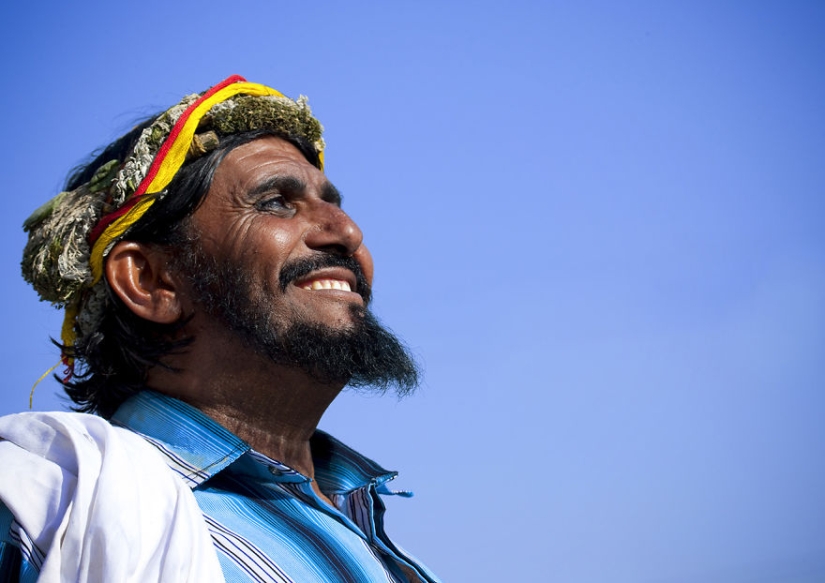 They wear crowns of flowers and herbs and live on the hills. Meeting them at the Al-Farsha Bazaar was special. Hospitality is a concept alien to these men.
They wear crowns of flowers and herbs and live on the hills. Meeting them at the Al-Farsha Bazaar was special. Hospitality is a concept alien to these men.
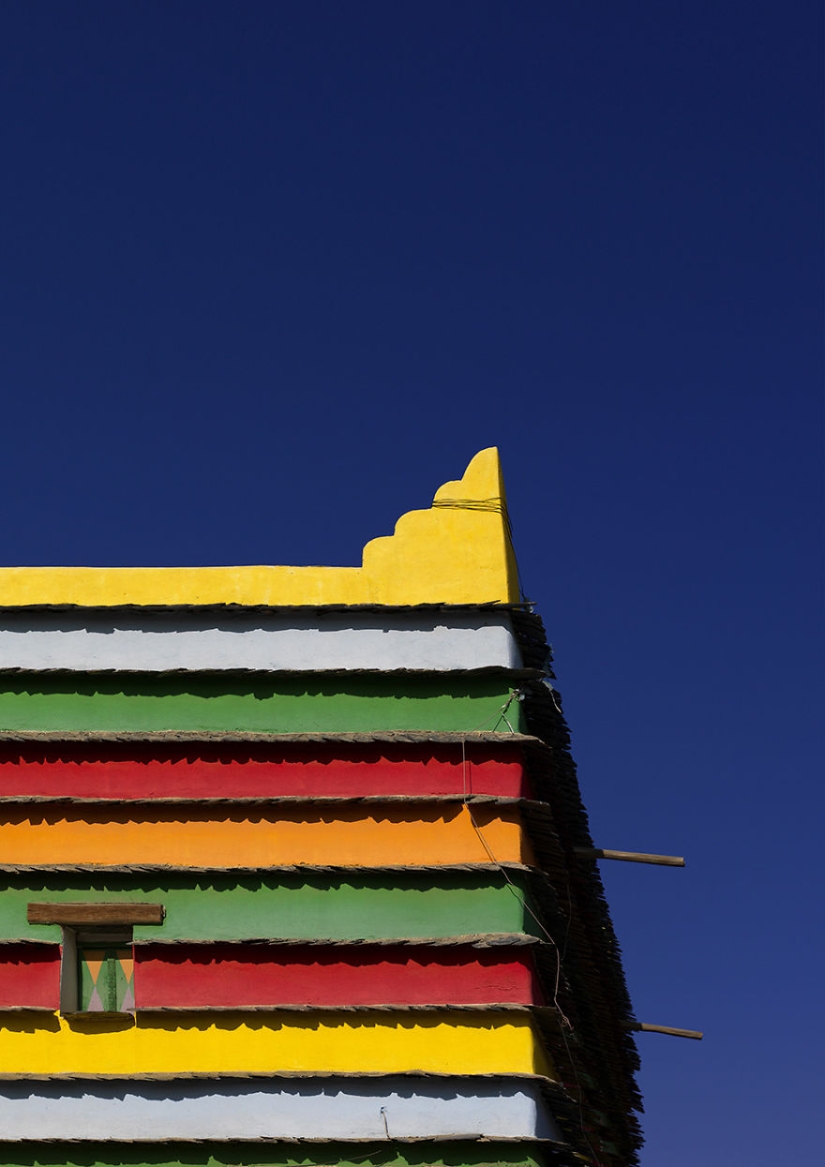 Many modern houses remain brightly painted inside and out. This art has been recognized by UNESCO. Women are mainly responsible for this.
Many modern houses remain brightly painted inside and out. This art has been recognized by UNESCO. Women are mainly responsible for this.
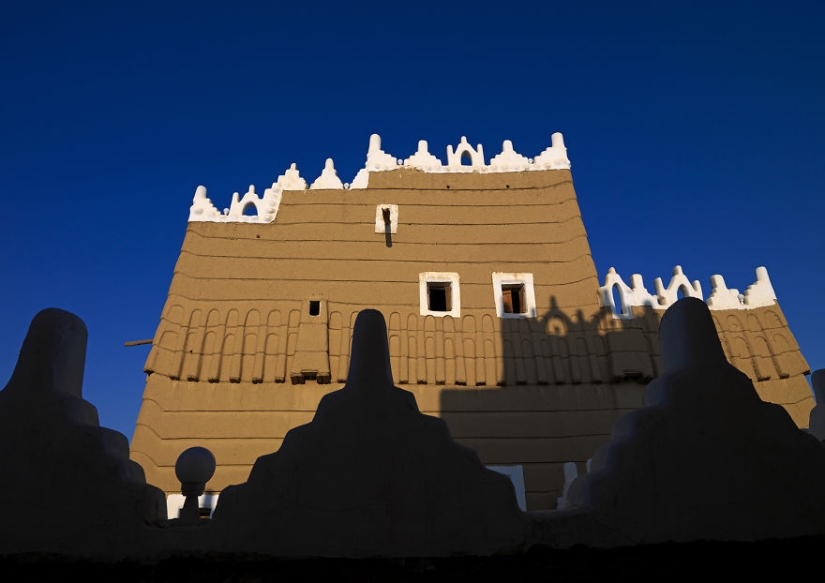 Preservation of heritage is a priority of the Government. These forts have been restored to perfection.
Preservation of heritage is a priority of the Government. These forts have been restored to perfection.
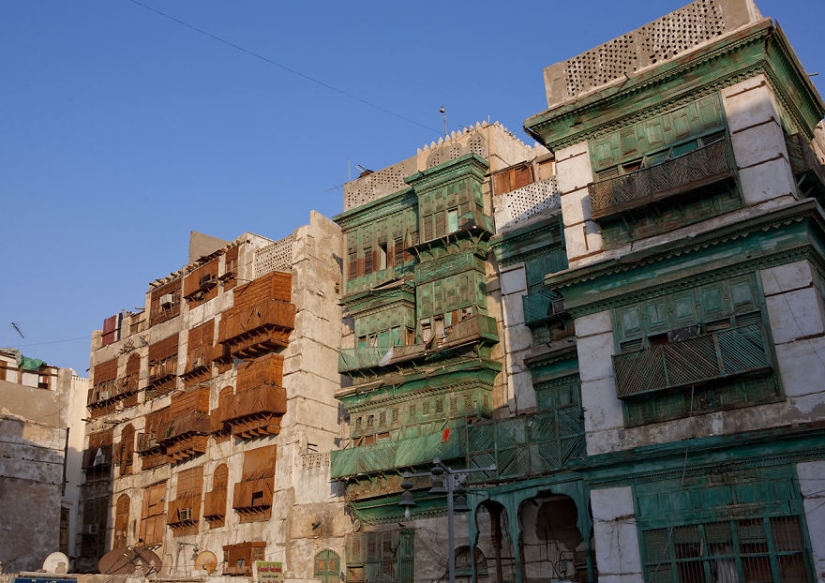 The architecture of Old Jeddah resembles the fairy tale "One Thousand and One Nights". Tall buildings covered with mashrabiyas, wooden balconies that allowed women to go out without being noticed. The Saudis left the old city, which has never been restored, despite its belonging to UNESCO. Only refugees from Somalia, Pakistan and Yemen.
The architecture of Old Jeddah resembles the fairy tale "One Thousand and One Nights". Tall buildings covered with mashrabiyas, wooden balconies that allowed women to go out without being noticed. The Saudis left the old city, which has never been restored, despite its belonging to UNESCO. Only refugees from Somalia, Pakistan and Yemen.
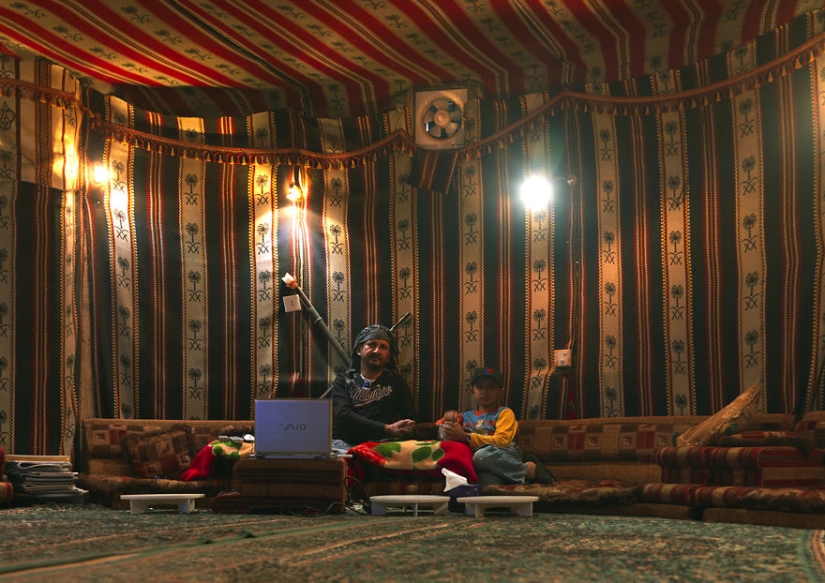
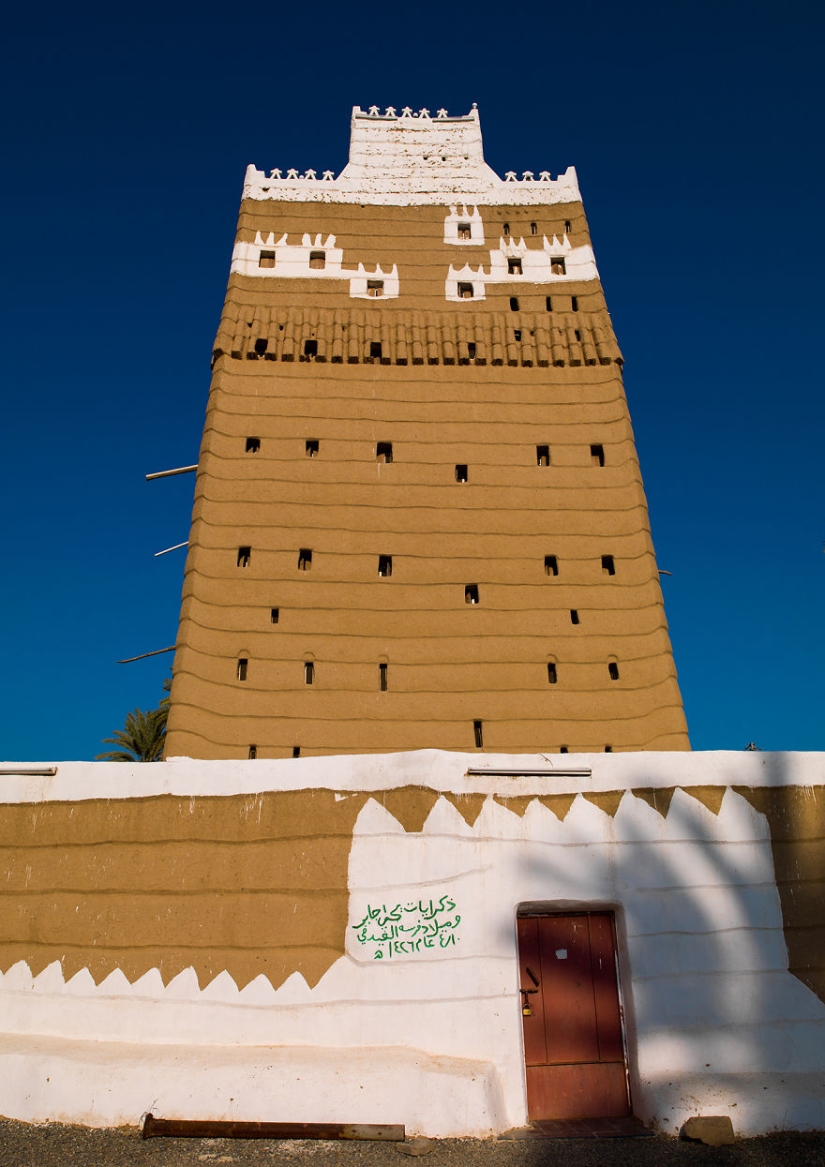 Traditional houses made of clay and brick in the south of the country. They reflect the cultural influence of Yemen in the area. They can have up to seven floors. The first floor is for livestock. The next one with small windows so that the heat does not penetrate inside, it is designed to accommodate people. The higher the floor, the larger the windows become to let in more light and cooler air. Some of these houses were built several centuries ago.
Traditional houses made of clay and brick in the south of the country. They reflect the cultural influence of Yemen in the area. They can have up to seven floors. The first floor is for livestock. The next one with small windows so that the heat does not penetrate inside, it is designed to accommodate people. The higher the floor, the larger the windows become to let in more light and cooler air. Some of these houses were built several centuries ago.
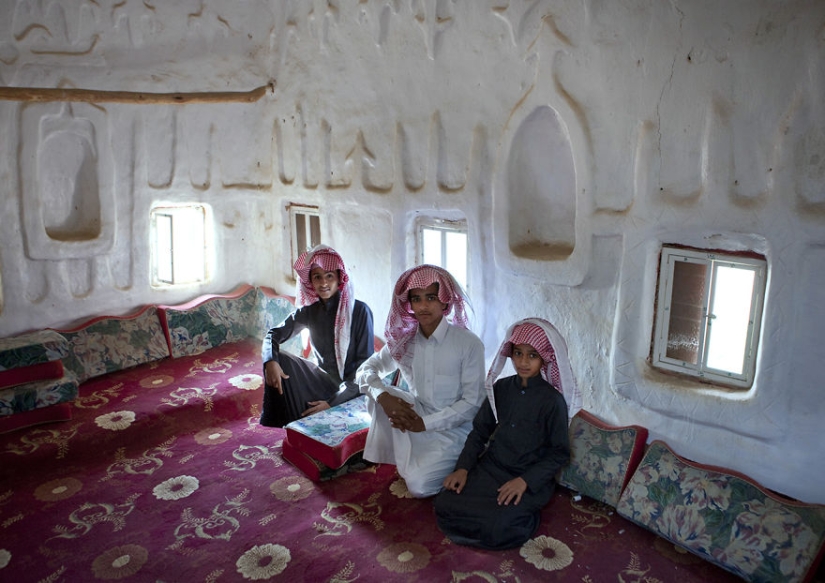 Many families come to these houses on weekends, having equipped them with metal roofs and air conditioners.
Many families come to these houses on weekends, having equipped them with metal roofs and air conditioners.
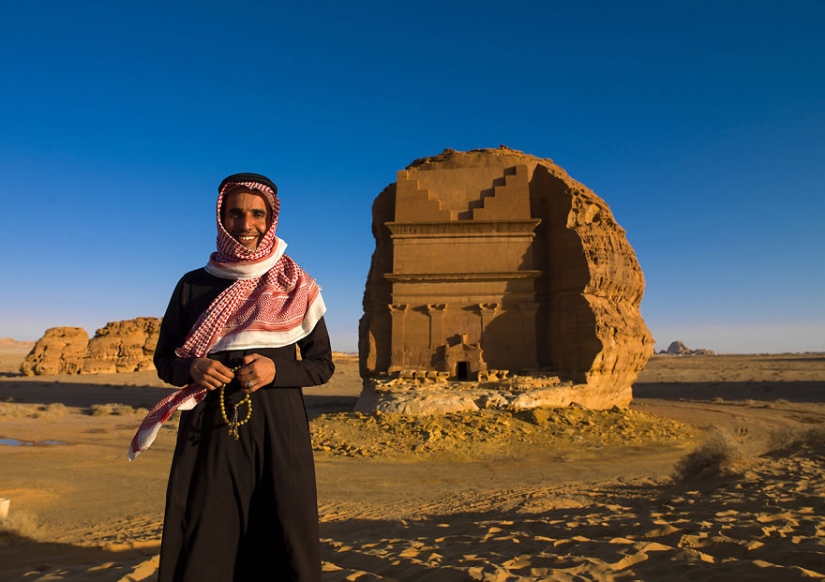 Madain-Salih.
Madain-Salih.
 The Hejaz railway was built by the Ottoman Empire at the beginning of the 20th century to transport pilgrims to the holy cities of Medina and Mecca.
The Hejaz railway was built by the Ottoman Empire at the beginning of the 20th century to transport pilgrims to the holy cities of Medina and Mecca.
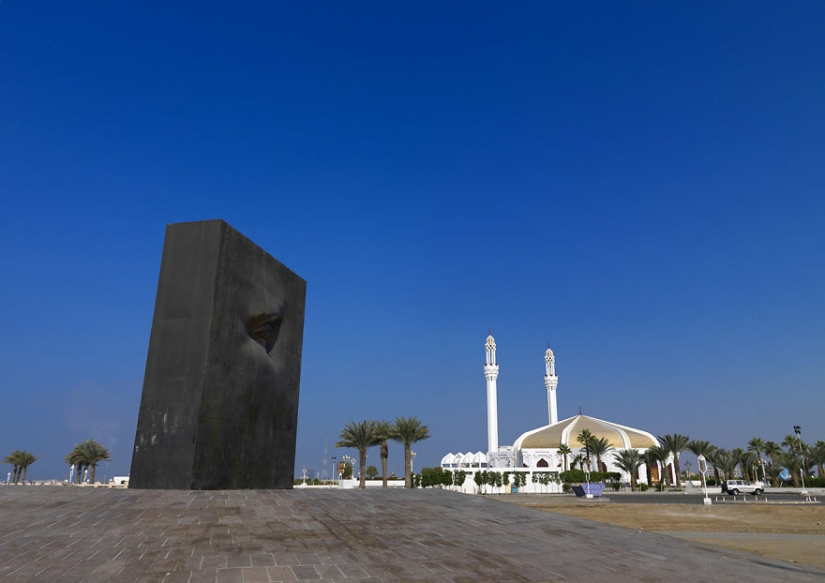 The El Hamra Museum is the largest open-air museum in the world.
The El Hamra Museum is the largest open-air museum in the world.
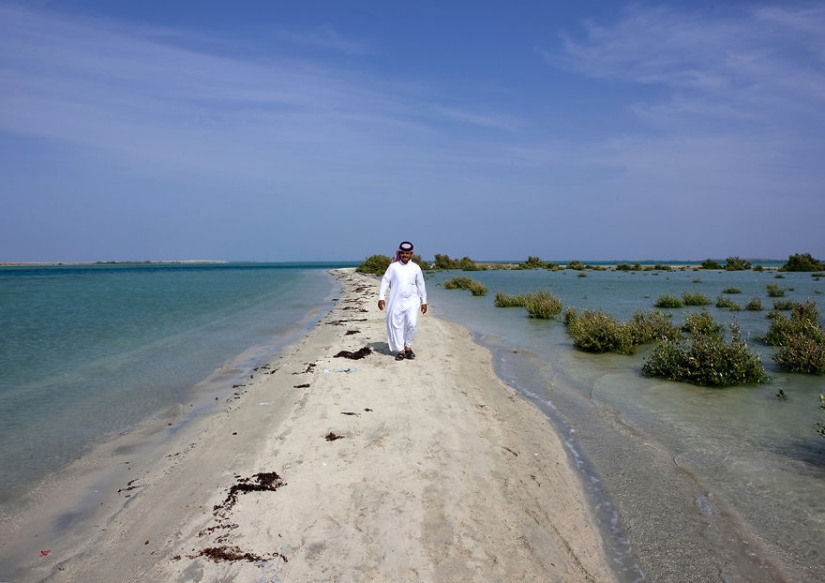 The only way to get to the Farasan Islands in Red Sea - rent a boat for a two-hour walk.
The only way to get to the Farasan Islands in Red Sea - rent a boat for a two-hour walk.
 The relics on Farasan date back to the first century BC.
The relics on Farasan date back to the first century BC.
 Extravagance is one of the main characteristics of urban design in Saudi Arabia.
Extravagance is one of the main characteristics of urban design in Saudi Arabia.
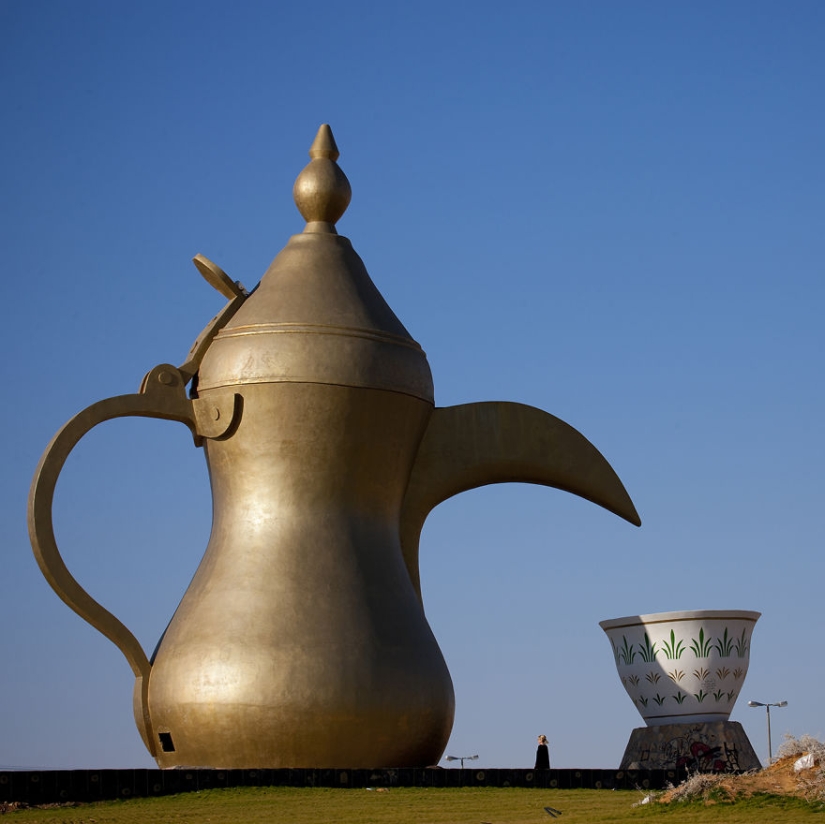 20-meter coffee pot.
20-meter coffee pot.
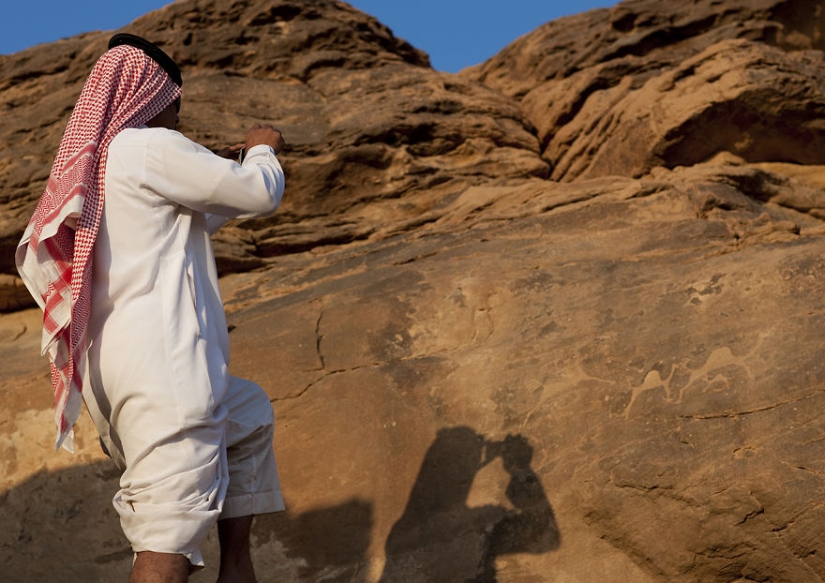
Keywords: Traveler | Saudi arabia | Photographer
Post News ArticleRecent articles

Have you ever wondered how to create movies? It turns out that sometimes what happens behind the scenes, looks even more ...

Loving fathers are willing to go to great lengths for the sake of their dear daughters. To please their little princesses, these ...
Related articles

Have you ever noticed that if you turn a photo of a human face upside down, what you see seriously resembles the physiognomy of a ...

We present you a selection of positive and sexy works by the American master of advertising photography Sean Dufren. Sean lives in ...

Papua New Guinea continues to amaze the primitive culture of their own peoples. Italian photographer managed to capture the unusual ...

Looking at this photo, you might think that it is a set for a movie about aliens. But this is not a dummy at all, but a real ...